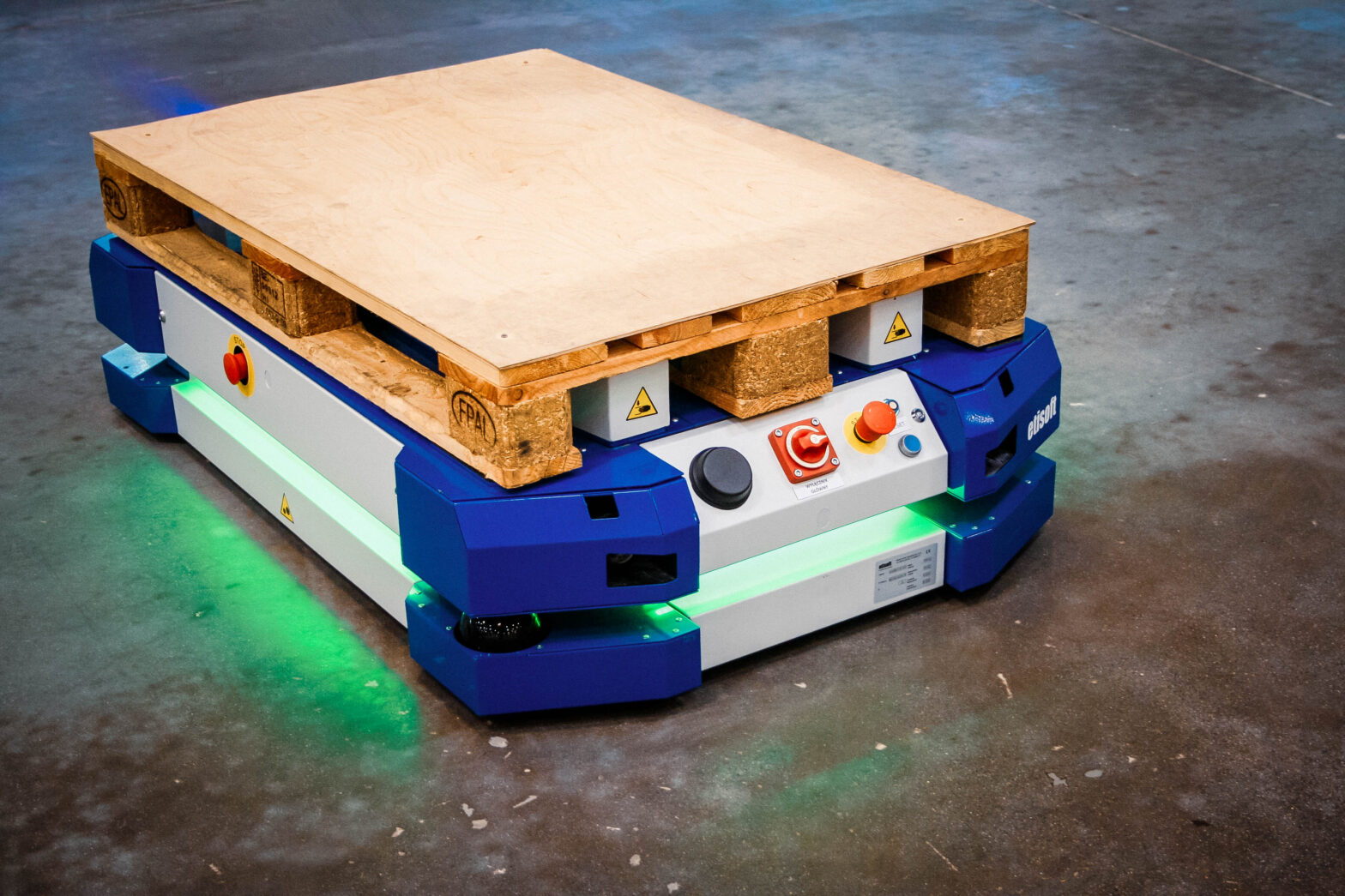
AGV mobile robots – a flexible and cost-efficient solution
When large production plants and manufactories appeared, the need arose to provide appropriate intralogistics measures, even though they were not called this way then. For most of the modern history, in-plant transport was based on human or animal muscle power, which eventually had to lead to the development of transport methods. Such as, for instance, AGV mobile robots.
AGV mobile robots, that is driverless trucks
Along with technological advancement, machinery, vehicles, roller conveyors and production lines began to appear. Work became simpler and an individual worker could be responsible for an increasing percentage of the goods transported. Two very important factors needed to be taken into consideration: flexibility and cost-effectiveness. Production lines were economical but inflexible. Workers responsible for manual or machine-assisted transport were flexible, but they entailed higher long-term costs.
Nevertheless, in the second half of the 20th century there was a breakthrough. Advanced (for the time) electronic circuits made it possible for flexible and cost-efficient solutions to emerge, i.e., driverless trucks.
Can there be anything more flexible?
The first AGVs were simple machines, sequential robots which, like the production line, moved only where the route was marked out by a “line.” This line in one of the first solutions was a wire recessed in the floor. Over time, non-inductive means of driving the vehicle appeared. After nearly seventy years we can base the movement of the truck on magnetic or reflexive tapes, or on simple cameras which recognise the specific arrangement of colours.
Solutions of this class made it possible to tremendously increase flexibility in comparison with the production line. Not without reason, in the second half of the 70s in the factory of a premium automotive manufacturer, we will no longer find solutions which were used only 50 years earlier in the factories of the pioneer of mass production. Can there be anything more flexible? Today shows that yes!
AGVs like the rook on the chessboard
How to avoid forging the floor when adding or modifying routes? How to reduce the cost of maintaining the routes?
Those who are actively interested in automatic transport solutions probably know the systems used, among others, in large sorting plants. In the areas where robots drive, appropriate markers are placed with information about where the marker is and in which direction it is facing. The robots drive between these markers, moving like the rook on the chessboard. A set of sensors checking acceleration, wheel speed, makes driving between the markers with satisfying precision possible. Systems of this class are much more resistant. Once the marker is destroyed, the system can still fully operate. Over short distances, the robot is accurate enough to reach the next undamaged element of the grid. New routes require only the application of new markers.
Despite the simplicity of this solution, it has two basic disadvantages. The first is the number of markers. There are many of them therefore the implementation requires a lot of work. The other is the movement like the rook. Such routes are very predictable, the robot movement is relatively easy to manage. The routes are, however, relatively long. Going from point (0.0) to (3.4) requires covering the distance of 7 metres. This is 40% more than the shortest route.
The most advanced robots are based on natural navigation. Robots “see” the details of the surrounding environment, they recognise walls, machinery, and other elements of the plant. Thanks to that, just as the human creates a map of the plant in their mind, robots create a virtual equivalent containing the necessary data to find their way around. Such a map is created by the robot itself, which, once again, shortens the lead time. In a medium-sized plant, almost any number of trucks can move on a single day!
Safety of designed AGVs
Still, the question may arise as to how employees are supposed to know how the AGV will move and whether it is safe for them. The first question should be addressed to those responsible for the design of the specific implementation. Vehicles of this class can move in any way. Everything depends on their configuration and customer requirements. If dedicated transport routes are to be provided, then robots will only move on these. If you expect movement like the one a chessboard, this is achievable. Making changes only means making modifications to the robot’s configuration, which, thanks to talented engineers, is becoming more and more intuitive with each passing year.
The same sensors which make it possible to “see” the plant also allow for the detection of personnel. The robot is aware that someone is walking or driving past it. This knowledge makes it possible to avoid dangerous or uncomfortable situations for employees. We can feel safe with robots, but we should not be uncritical.
Over the last few years, mobile robots have been developing more and more dynamically, they are more and more advanced and intelligent. However, we should remember about the evolution they have undergone over the last 70 years.
If you are thinking about the implementation of a safe and tailored AGV for your business, the designers at Etisoft Smart Solutions will answer your questions.
